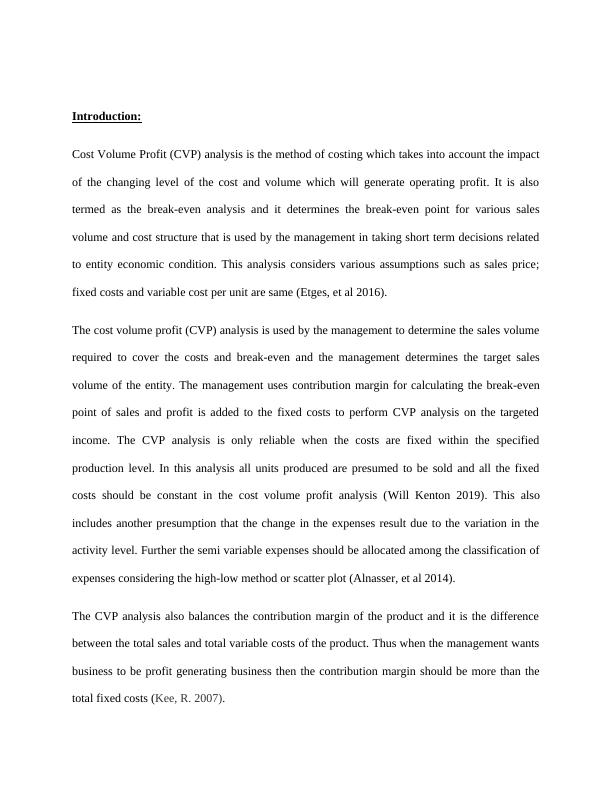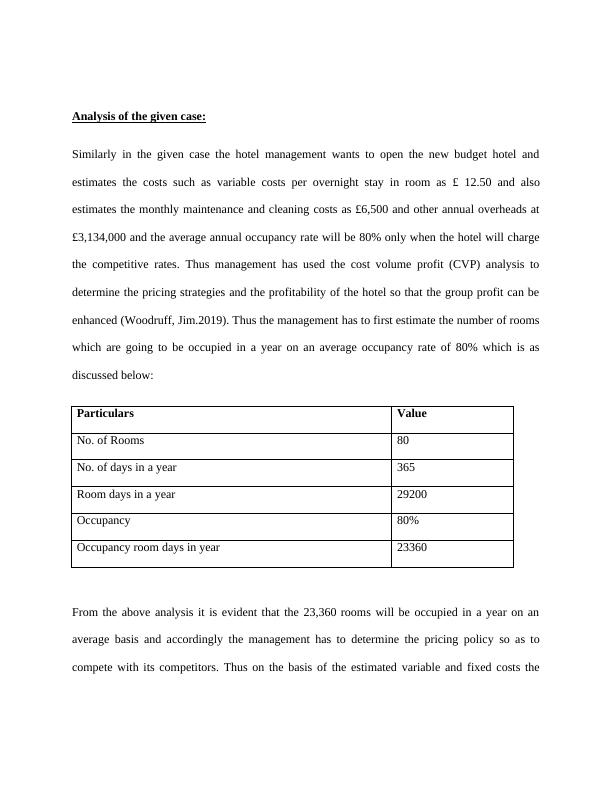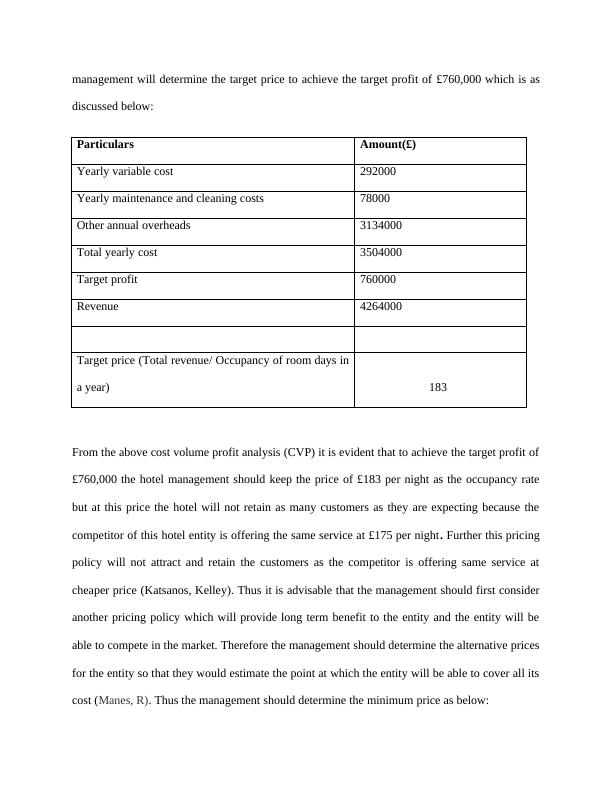Cost Volume Profit (CVP) Analysis Assignment
Garnet Hotels is considering expanding its operation in London by adding additional room space. The company is considering investing in either a city center budget hotel or expanding an existing boutique hotel.
6 Pages1407 Words20 Views
Added on 2022-09-10
Cost Volume Profit (CVP) Analysis Assignment
Garnet Hotels is considering expanding its operation in London by adding additional room space. The company is considering investing in either a city center budget hotel or expanding an existing boutique hotel.
Added on 2022-09-10
ShareRelated Documents
End of preview
Want to access all the pages? Upload your documents or become a member.
Accounting in Hospitality and Tourism Industry
|10
|2176
|421
Managing Financial Resources
|16
|901
|81
Assignment on Cost-Volume-Profit Analysis (CVP)
|5
|1141
|213
Cost Accounting: Impact of Variable and Fixed Costs on Forecast
|6
|1271
|329
Finance Assignment: Break-even analysis, payroll budgeting and sales revenue calculation
|7
|729
|489
Finance and Funding in Travel Tourism Sector Assignment (Doc)
|20
|4370
|352



